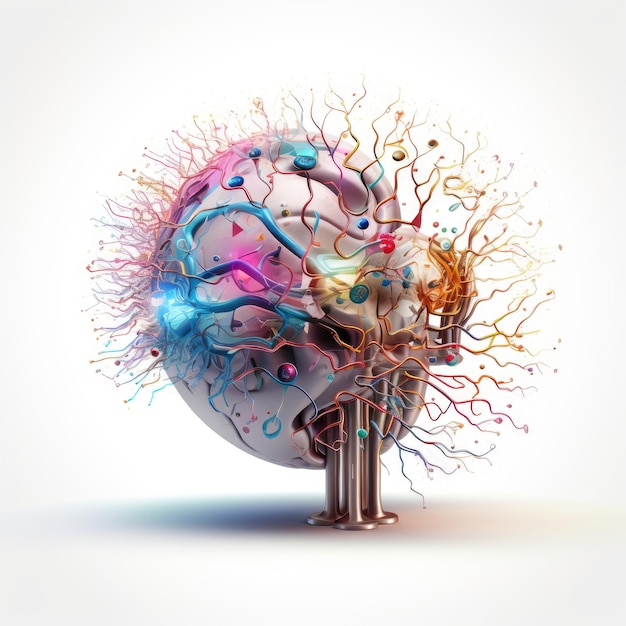Are Altman And Nadella's Visions Of AI Diverging?

Table of Contents
OpenAI's Focus: General-Purpose AI and Long-Term Research
OpenAI's strategy is characterized by its ambitious pursuit of Artificial General Intelligence (AGI), a type of AI possessing human-level intelligence across a wide range of tasks. This bold goal sets it apart from many other players in the AI arena.
The Pursuit of AGI
OpenAI's commitment to AGI is a defining characteristic of its approach. This dedication manifests in several key ways:
- Emphasis on fundamental research and breakthroughs in AI capabilities: OpenAI prioritizes pushing the boundaries of what's possible in AI, investing heavily in foundational research to unlock new levels of intelligence. This includes exploring novel architectures, training methodologies, and theoretical frameworks.
- Less focus on immediate commercial applications, prioritizing safety and ethical considerations: Unlike many companies focused on short-term profits, OpenAI prioritizes the responsible development of AGI. This means carefully considering the potential risks and ethical implications of increasingly powerful AI systems.
- Open-source initiatives and collaborative research to accelerate AGI development: OpenAI believes that collaboration is key to achieving AGI safely and efficiently. They actively share their research and findings with the broader AI community, fostering a collaborative approach to tackling this monumental challenge.
The Risk and Reward of AGI
The pursuit of AGI inherently involves significant risks. OpenAI acknowledges this and has integrated risk mitigation into its core strategy:
- Extensive safety research and alignment efforts to ensure beneficial AGI: A significant portion of OpenAI's resources are dedicated to research aimed at aligning AGI with human values and ensuring its beneficial use. This includes developing techniques to control and guide the behavior of highly advanced AI systems.
- Concerns about the potential for misuse and the need for responsible AI development: OpenAI is acutely aware of the potential for AGI to be misused, whether intentionally or unintentionally. This concern drives their focus on responsible AI development and deployment.
- Strategies for mitigating potential risks and maximizing the benefits of AGI: OpenAI is actively developing strategies to mitigate the potential risks associated with AGI, while simultaneously working to maximize its benefits for humanity. This involves careful planning, robust safety protocols, and ongoing monitoring.
Microsoft's Approach: AI Integration into Existing Products and Services
In contrast to OpenAI's long-term vision, Microsoft's approach centers on integrating AI capabilities into its existing product suite and cloud services. This strategy is driven by a focus on near-term commercial applications and market dominance.
AI-Powered Productivity and Cloud Services
Microsoft is aggressively incorporating AI into its core offerings:
- Integration of AI models like GPT into Microsoft 365 and Azure cloud platform: Microsoft is leveraging cutting-edge AI models, such as GPT, to enhance the functionality of its productivity tools and cloud services. This translates into features like improved search capabilities, automated tasks, and more intelligent assistance for users.
- Focus on commercial applications and revenue generation through AI-powered products: Microsoft's AI strategy is firmly rooted in its business objectives. The company aims to generate substantial revenue by integrating AI into its products and selling AI-powered services to businesses and consumers.
- Emphasis on responsible AI development but with a greater focus on market competitiveness: While Microsoft acknowledges the importance of responsible AI, its primary focus remains on maintaining a competitive edge in the rapidly evolving AI market.
Strategic Partnerships and Investments
Microsoft's strategic approach is also evidenced by its partnerships and investments:
- Leveraging OpenAI's research for commercial gains while also supporting independent research: Microsoft's significant investment in OpenAI provides access to cutting-edge research, which it can leverage to enhance its own products and services. Simultaneously, they are supporting OpenAI's independent research efforts.
- Building a robust AI ecosystem through strategic alliances and acquisitions: Microsoft is actively building a comprehensive AI ecosystem through strategic partnerships and acquisitions, ensuring broad reach and influence in the AI market.
- Focus on integrating AI capabilities across various industries and sectors: Microsoft is aiming to integrate AI into a wide range of industries and sectors, broadening its market reach and cementing its position as a leading AI provider.
Comparing the Diverging Paths and Potential Outcomes
The contrasting approaches of OpenAI and Microsoft highlight a fundamental difference in priorities: long-term research versus near-term gains.
Long-Term Vision vs. Near-Term Gains
- Discussion of the trade-offs between fundamental research and rapid commercial deployment: OpenAI's focus on fundamental research may yield slower initial returns, but it has the potential to lead to more significant breakthroughs in the long run. Microsoft's focus on rapid commercial deployment prioritizes immediate gains but may limit its potential for groundbreaking discoveries.
- Analysis of the potential impact on the pace of AI development and innovation: The diverging strategies could lead to different paces of AI development and innovation. OpenAI's approach might result in slower but more substantial advancements, while Microsoft's approach may lead to more rapid but potentially less transformative progress.
Ethical Considerations and Regulatory Landscape
The contrasting approaches also influence how each company approaches ethical considerations and regulatory compliance:
- Comparison of the respective ethical guidelines and safety protocols: OpenAI and Microsoft have different ethical guidelines and safety protocols reflecting their priorities. OpenAI prioritizes safety and ethical considerations above all else, while Microsoft balances these concerns with market competitiveness.
- Analysis of how each company might respond to future AI regulations: The differing approaches may also lead to distinct responses to future AI regulations. OpenAI might advocate for stricter regulations, while Microsoft might prioritize a more flexible and market-driven approach.
Conclusion
Sam Altman and Satya Nadella, though both prominent figures in the AI revolution, represent distinctly different strategic visions. OpenAI's focus on long-term AGI research prioritizes safety and ethical considerations, while Microsoft's approach centers on the immediate integration of AI into its products and services for commercial gain. These diverging paths will undoubtedly shape the future landscape of AI, impacting technological advancement, ethical considerations, and the overall competitive dynamics of the market. The differing approaches will ultimately lead to different outcomes in the pace and direction of AI development.
Call to Action: Stay informed about the evolving strategies of Altman and Nadella as the field of AI continues to rapidly advance. Understanding the diverging visions of these key players is crucial to navigating the complexities of the future of Artificial Intelligence. Follow the latest developments in Altman and Nadella's AI visions to stay ahead of the curve.

Featured Posts
-
 The X Files Gillian Anderson Excited Yet Apprehensive About Her Comeback
May 01, 2025
The X Files Gillian Anderson Excited Yet Apprehensive About Her Comeback
May 01, 2025 -
 Michael Jordan Fast Facts And Key Stats
May 01, 2025
Michael Jordan Fast Facts And Key Stats
May 01, 2025 -
 Mercedes Mone Seeks Tbs Championship Return From Momo Watanabe
May 01, 2025
Mercedes Mone Seeks Tbs Championship Return From Momo Watanabe
May 01, 2025 -
 Uk Eurovision 2025 A Closer Look At Remember Monday
May 01, 2025
Uk Eurovision 2025 A Closer Look At Remember Monday
May 01, 2025 -
 Dzilijan Anderson Zenstvenost U Retro Haljini
May 01, 2025
Dzilijan Anderson Zenstvenost U Retro Haljini
May 01, 2025
